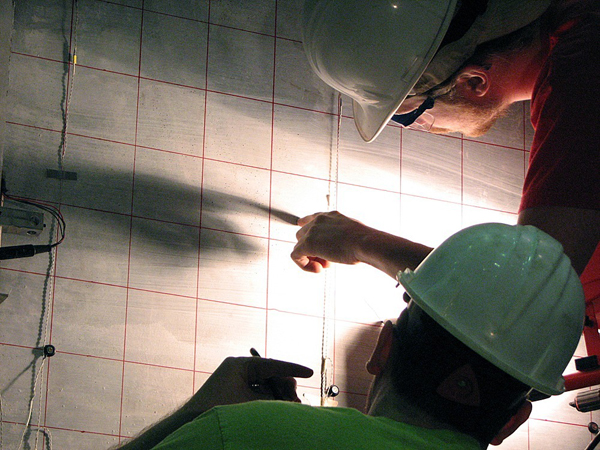
[Image above] The Department of Energy has awarded Iowa State University researchers with a $1-million grant for their high-strength concrete technology that has the potential to revolutionize the production of wind energy. Credit: Mike Krapfl; Iowa State University
Confession: I have anemomenophobia.
I am unabashedly, inexplicably, and deathly afraid of wind turbines.
And I’m not the only one. The Internet is chock full of other anemomenophobics who are equally frightened of those ominous, alienesque tall towers of clean energy.
But if Iowa State University researchers have their way, these towering towers are about to get that much stronger and taller—thanks to high-strength concrete technology and a $1-million investment from the Department of Energy.
The DOE has awarded the Iowa State team—lead by Sri Sritharan, professor of civil, construction, and environmental engineering—an 18-month grant to improve their Hexcrete concept developed during earlier work at reinforcing the concrete towers.
According to an Iowa State news release, Hexcrete “uses precast and easily transportable components to build hexagon-shaped towers from concrete panels connected to concrete columns.”
“I think this will revolutionize wind energy,” says Sritharan, who also heads the Engineering College’s Wind Energy Initiative. “We won’t need to transport these big tubular towers on the highways and we’ll harvest energy where it’s needed.”
Sritharan says that the concrete-for-steel substitution would provide additional benefits, including:
- Concrete towers are taller. The concrete towers can surpass the 80-meter steel towers. Winds at 100 meters and higher are faster and steadier.
- Concrete towers reduce production time. Concrete ups the amount of time the towers are “productive.”
- Concrete towers expand wind energy’s geographic footprint. Concrete towers can make wind energy harvesting possible in places where it previously wasn’t—a.k.a. places where winds are above 100 meters.
- Concrete towers cut costs. The concrete towers can produce wind energy at a lower cost, and specifically reduce the costs associated with transporting the towers.
During testing last year, the full-size segments and connections successfully handled the load the taller towers would require—even under “extreme conditions.”
The additional monies will fund further research into the manufacturing process needed to create these taller concrete towers, which Sritharan believes could greatly impact not just the energy industry, but the entire U.S. economy.
According to his project summary, “If used for the entire height, the Hexcrete concept will eliminate transportation challenges and engage a well-established U.S.-based precast concrete industry in the wind tower business, thereby greatly reducing reliance on foreign steel and increasing the job market in the U.S.”
In the meantime, I—and my fellow anemomenophobics—have some time to prepare.

